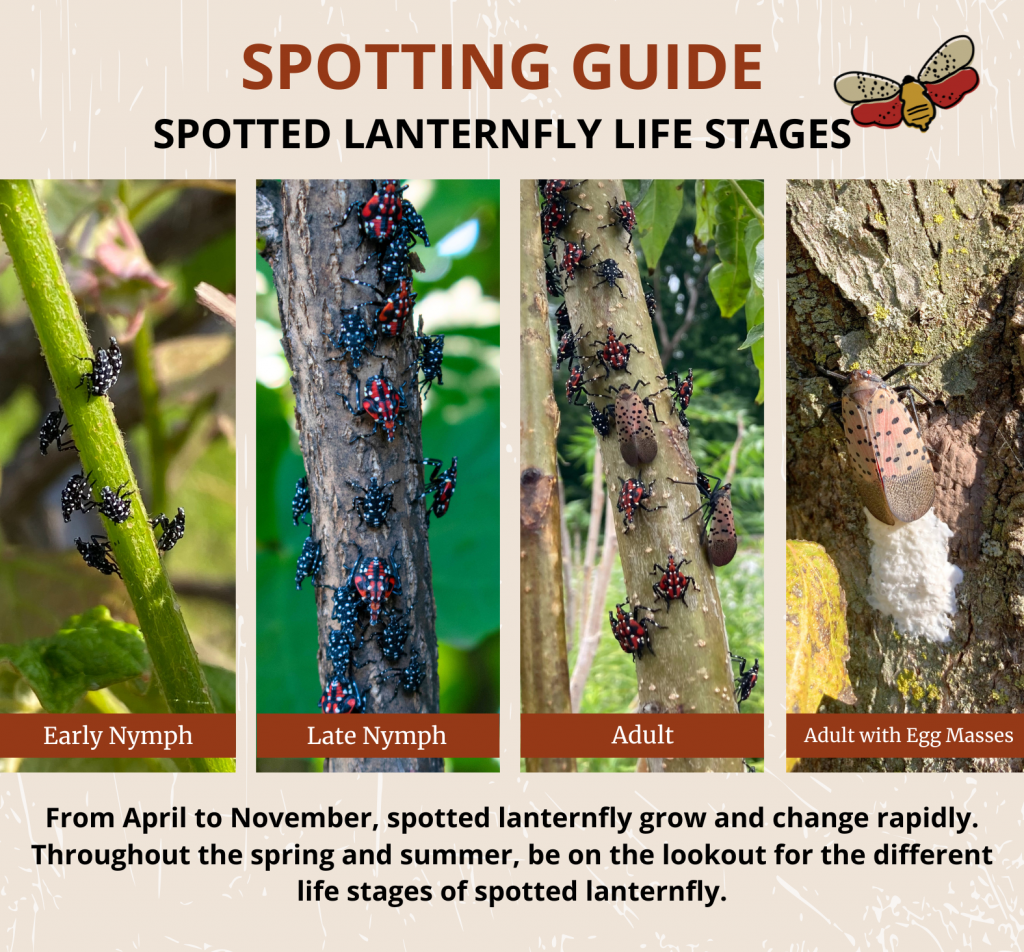When managing the spotted lanternfly, you need to focus on two areas – vegetation management and destroying any life stage of the spotted lanternfly.
The tree of heaven is an important food source, and eliminating this invasive helps decrease the spotted lanternfly population. This is a tree often seen in industrial parks, along highways and railways, and in unmanaged areas or vacant lots. Municipalities and businesses should prioritize destroying the female tree of heaven while leaving some male specimens as trap trees. If identified, homeowners should remove the tree of heaven from their property.
Proper identification of the tree of heaven is important in helping to eradicate this invasive pest. Although the tree of heaven is an invasive plant, several native trees (sumac, black walnut) are similar-looking. It’s important to distinguish these from the tree of heaven so that these look-alikes are not removed. Tree of heaven is a very hardy tree species that grows almost anywhere because of its tolerance of poor soils. The species can grow to 82 feet and is usually found in clusters.
If you have found a tree of heaven on your property, it is time to make a plan!
1. Identify which trees are female.
These trees will have winged seedpods. Remove female trees from your property to eliminate them as a potential food source for spotted lanternfly.
2. Create “trap trees.”
Trap trees are a male tree of heaven that does not have seeds. Leave 10% of the largest male trees standing and treat them with a registered systemic insecticide to target spotted lanternflies that land and feed on them. This chemical should be applied yearly in the springtime.
3.Time to cut and treat.
Now that you have your trap trees picked out, it’s time to remove the remaining tree of heaven. The tree of heaven is notorious for growing back with a vengeance if it’s only cut down. The roots have been known to reach out 26 feet and send up offshoots if the parent tree is cut down. To ensure that the tree is killed, you will need to treat it with a herbicide. Failure to apply herbicide, and in some cases multiple treatments, will result in new growth from the stump or roots.
When using herbicides and insecticides, remember to read the product label and be mindful of all label restrictions!
If you have spotted lanternfly on your property, removing all life stages of this invasive pest is important. One pregnant female spotted lanternfly can lay upwards of 200 eggs before the season ends, resulting in new populations in other areas and exponential growth on your property.

Fall and Winter (September – April)
From Spring-Fall, we rely on the physical control and the chemical control of spotted lanternfly. The insect’s stage and the phase that the tree is in dictate what type of control we use.
Spring and Summer (Late March-early September)
Late Summer and Fall (early September – November)
Homeowners should look for products labeled for plant hoppers. Be sure to follow label directions. Below is a list of approved spotted lanternfly treatment options. The mention of a product name does not constitute a specific endorsement by the Delaware Department of Agriculture.
Emergency Regulations for Spotted Lanternfly
Delaware Spotted Lanternfly Quarantine Locator
What Does the Delaware Spotted Lanternfly Quarantine Mean?
Delaware Homeowner Spotted Lanternfly and Treatment Fact Sheet Updated: April 9, 2024
Delaware Resident Spotted Lanternfly Quarantine Compliance Checklist
Delaware Business Spotted Lanternfly Permit Registration and Testing
Search for a Commercially Licensed Turf and Ornamental Pesticide Applicator:
Click on Find a Licensed Business, then select Search by Business License Category. Select Ornamental and Turf Pest Control in the drop-down box and click Search.
Related Topics: Homeowners, residential management, Spotted Lanternfly